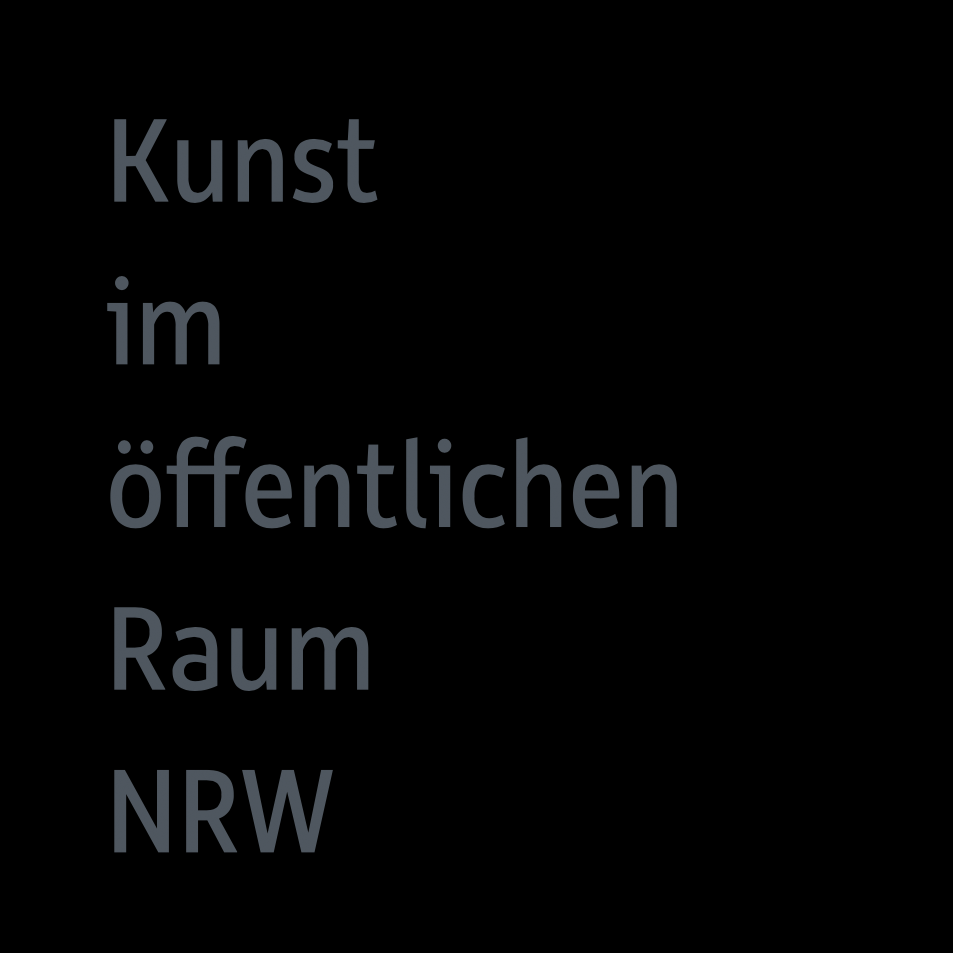9 Vorschläge für einen Wald / 9 Proposals for a Forest

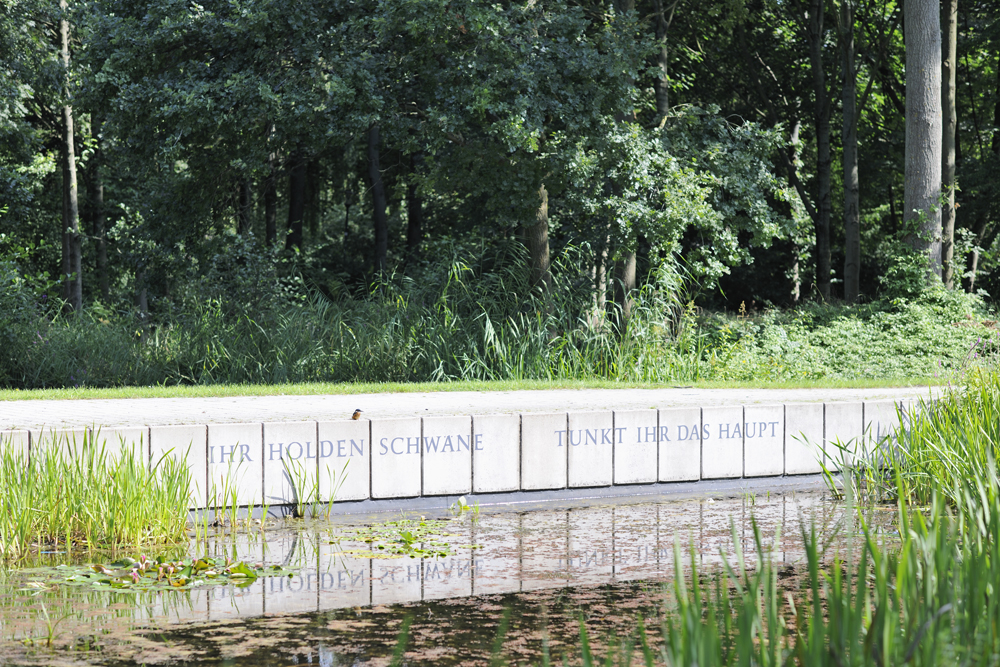

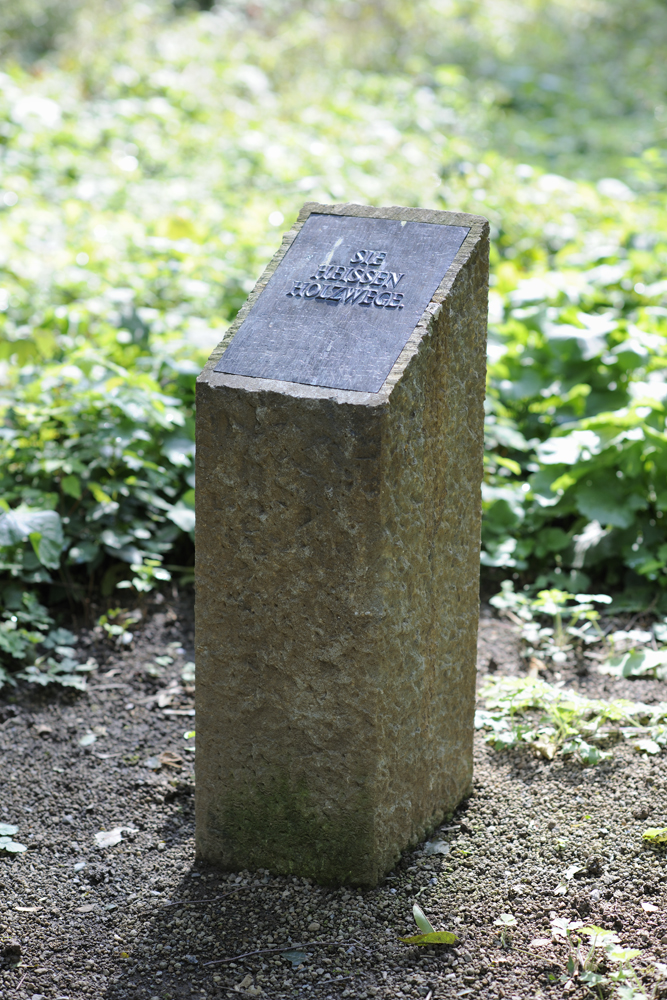
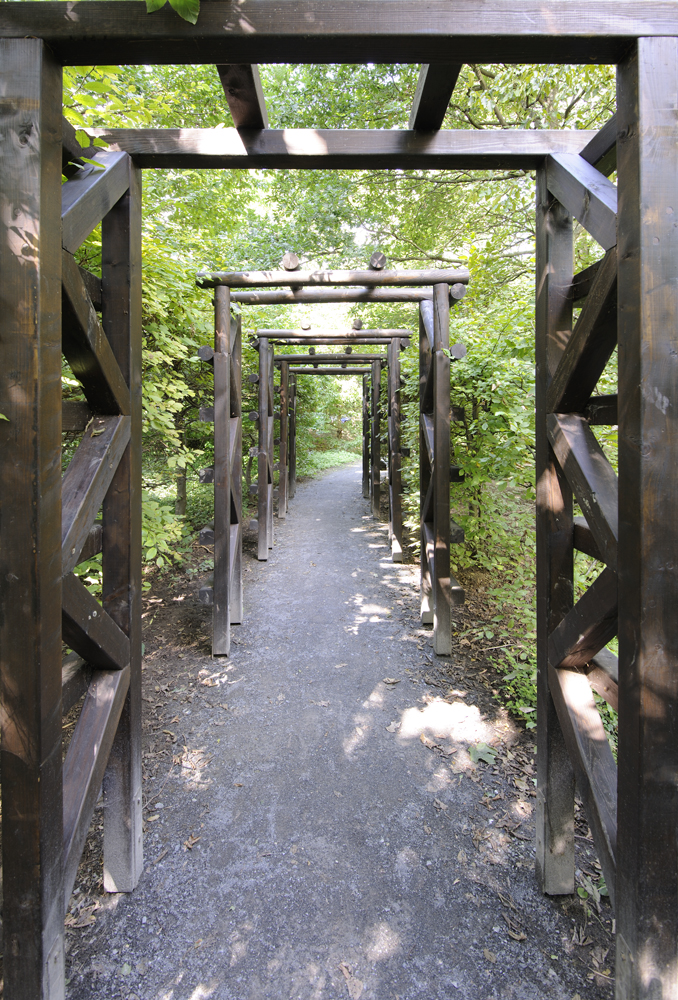

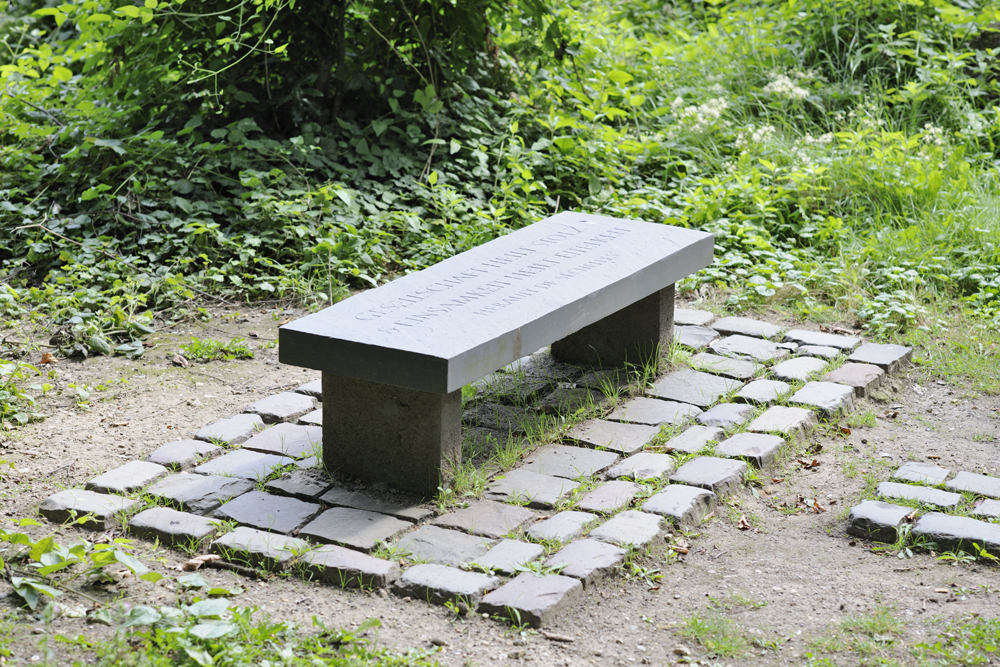


The “Kamper Wäldchen” was redesigned as part of the 1995 Landesgartenschau. Originally a flat area of land with poplars planted on a square grid, this space was transformed into a landscaped park, featuring an underlying artistic concept by the Scottish artist Ian Hamilton Finlay. The design of the park itself is not based on modern or traditional landscape architecture, but instead is meant to create the impression of a forgotten enchanted forest. In this wooded wilderness, spirituality, philosophy, art, and nature merge into spiritual and emotional unity. In addition to the landscaping, nine sculptural elements complete the park as a unified work of art. These art objects illustrate Finlay’s ideas and tie them to thoughtful references to historical personalities and events (particularly those of antiquity and the time of the French revolution), while placing them in the context of nature.
A stone bench with a quote from French aristocrat Herault de Sechelles (1759–94) can be found near the waters of the “Erftkolk”: “Society heals pride, loneliness heals vanity.” It invites you to reflect on human weakness, as well as the fate of the author, who died under the guillotine during the French Revolution.
A bronze bust of French natural philosopher Jean Jacques Rousseau (1712–1778) is inscribed with his quote: “The forest became my study.”
Three stone pillars have bronze plates featuring quotes from Martin Heidegger’s (1889–1976) texts. The German philosopher titled his essays Off the Beaten Track to express the rarely accessed, diverging ways of the human spirit.
There is a pergola made up of several arches. The materials used in their construction transition from geometrically crafted wood parts to increasingly unprocessed natural components, illustrating the transition from nature to culture.
On the walls along the pond, there are two lines from Friedrich Hölderlin’s (1770–1843) poem “Hälfte des Lebens” / “Half of Life.” They inspire the viewer to imagine swans on the water.
Attached to a freestanding oak, there is a tablet with text on it. The first part comes from the French poet Lochac and the second part was added by Finlay. Together they address the “sublime” that is particular to the works of painter Caspar David Friedrich.
A simple signpost indicates the direction to Vincennes, which is a suburb of Paris today, but here represents a turning point in Rousseau’s life. On his way to visit his imprisoned friend Diderot in Vincennes, he took a break and read the newspaper. In it, he learned about a poetry competition on the question of whether progress in the arts and sciences leads to increased morale. At that moment, he made the decision to live in seclusion.
There is a stone tablet with a quote from the poet Virgil (1st century BC) on a tree with leaves and branches that rustle in the wind.
Between the spruce trees in the woods, there is a stone pyramid engraved with the biographical data of the German painter Caspar David Friedrich (1774–1840).
Reference: www.grevenbroich.de
Ian Hamilton Finlay
← Zur Startseite
Grevenbroich, at the Altes Schloß
